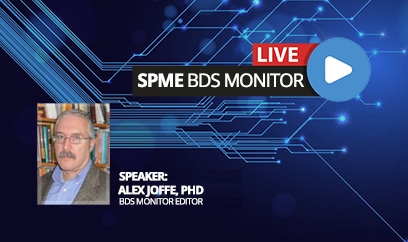-
Can tendentious, politically motivated, subjective, polemical, unbalanced, and/or intentionally misleading and inaccurate publications qualify the possessor of a terminal degree for tenure in his or her field?
-
Is the promotion of a personal, political agenda under the guise of an academic discipline legitimate scholarship protected by academic freedom?
-
Are disseminating demonstrably erroneous information and extolling the destruction of primary data acceptable elements of publications considered for academic advancement?
Critics and some reviewers of El-Haj’s major book have suggested that her work contains many of these components.
During the academic popularity of New Criticism in literary studies from the 1920s to the 1960s, and with the subsequent emergence of Deconstruction, Postmodernism and Post-structuralism, the assumption that scholarly conclusions based on research in the humanities or social sciences (and, for some, the natural sciences) are inherently skewed by cultural biases and “prisms” of subjectivity has become an accepted axiom in many academic disciplines. When applied to literature, this approach may yield new insights by the reader that even the original author did not know or intend. When applied to historical studies, the principles of these approaches lead inexorably to the conclusion that history is simply what a people tells itself its past was, not what actually happened. By this calculus, there are no absolute truths, empirical data are irrelevant, and “facts” are simply subjective perceptions. All knowledge is relative.
Much of this argumentation is based upon the understandable assumption that multicultural diversity has been ignored or suppressed by Western thought and actions, and that learning and culture can and should be advanced by openness toward other ways of listening and thinking. In the process, however, Western thought and its associated research methods are not simply relegated to a legitimate place among others, but are dismissed as corrupting influences that suppress other cultures.
This conclusion results in the denial of the possibility of truth itself. The classic goal of universities to seek “veritas” is altogether negated. (Columbia’s motto is similar to Harvard’s, but is more theological: In lumine Tuo videbimus lumen [“In Thy light shall we see light”], a phrase taken from Psalm 36:9.) In a seemingly laudable attempt to recognize and embrace the full spectrum of human cultural diversity, a nefarious subtext has risen to primary status. Western contributions including the scientific method and its concomitant goal of objective research have been deemed illegitimate or impossible. In the process, critical analysis of primary data is regularly impugned and replaced by positions or theories that pander to non-Western, non-patriarchal, non-colonialist methodologies not because they provide more accurate understandings of data, but simply because they are “non-‘s,” a characteristic that gives them preeminence because of what they are not.
The inherent rights of all people to hold personal views and beliefs have been mobilized to negate reality itself. X may believe that the world is flat. Y may believe that the world is round. Each has the right to her or his opinion, but the veracity of Y’s position trumps X’s. Just because one has the right of belief and free speech, one’s opinion is not perforce true. Indeed, in this example both positions cannot be true because they are mutually exclusive. Yet, many practitioners of Deconstruction, Postmodernism, and Post-structuralism might argue that depending on X’s cultural background and personal belief system, the veracity of his/her claim cannot be dismissed and actually is as “true” as Y’s.
Over the last century, Near Eastern archaeology has grown in sophistication and scientific precision. The history of ancient Israel was once the purview of 19th century biblical scholars (exemplified by Julius Wellhausen) who made no secret of their antagonism toward Judaism and their scholarly goals of undermining its history as described in biblical texts. In the 20th century the emergence of precise methods of excavation and analysis in Near Eastern archaeology-including advances in stratigraphy and ceramic and paleographic typologies-have allowed archaeologists to contextualize artifacts.
Both Israeli and North American archaeologists of the Levant owe a substantial debt to scholars like William F. Albright and his academic heirs who sought to establish a “critical” methodology. When possibly pertinent to the site and stratum being excavated, they use the Hebrew Bible as one point of departure, taking its historical assertions as hypotheses to be tested, proved, or disproved. They also use ancient inscriptions from Mesopotamia, Egypt, Phoenicia, Aram, Israel, Ammon, Moab, and Edom with the same provisos. Their goal is veritas, not theology or nationalistic chauvinism. Indeed, contemporary Near Eastern archaeologists constantly debate each other and revise analyses and theories as new data emerge from excavations without regard for biblical consistency. Their conclusions are always open to revision based on new data. In this they follow Albright himself, who spent a good portion of his voluminous publications correcting, refining, and retracting his earlier work in light of fresh data. His disciples have followed this approach, regularly uprooting Albright’s own conclusions in the process.
Over the last three decades a loosely linked band of scholars known variously as Minimalists or as the Copenhagen School has sought to challenge the historicity (i.e., the historical accuracy) of virtually the entire biblical narrative despite the conclusions of more than a century of archaeology and epigraphy. William G. Dever of the University of Arizona, one of Near Eastern archaeology’s most productive excavators and prolific scholars, has provided a systematic refutation of the Minimalists by comprehensively utilizing the results of excavations and documents.i In addition, scholars of the ancient Near East such as Gary A. Rendsburg and Anson Rainey have pointed out that “Thompson, Davies, Lemche, and Whitelam [the key proponents of the Minimalist position] have never excavated an Israelite or any other archaeological site and they have no experience in dealing with an archive of ancient Near Eastern texts such as those of Ebla, Mari, Nuzi, Amarna, Ugarit, and so on.” Rendsburg thus argues that “the academy has created an intellectual environment which permits the untrained to operate on an equal par with the trained.”ii
As Barnard’s El-Haj is an anthropologist critiquing a wide swath of another discipline, Near Eastern archaeology, the critiques applied to the Minimalists may also pertain to her work.
Exposing the prejudices of scholars who slant or distort conclusions for personal gain or ideology must stand as a central responsibility of academe. Promoting such prejudices in the very name of exposing them in the works of scholars who genuinely seek critical objectivity represents a cynical perversion of a fundamental academic precept. If El-Haj has sought to alert archaeologists of ancient Israel to a subconscious Israeli nationalistic bias whose elimination would strengthen their research and conclusions, then she may have performed an important service to scholarship generally and Near Eastern archaeology in particular.
If, however, she has intentionally maligned an entire discipline with the accusation of nationalistic prejudice when her personal agenda is paradoxically, precisely, or cynically the furtherance of her own nationalistic ideology at the expense of decades of careful excavations and rigorous publications, she has performed no important scholarly service.
Columbia University has historically been identified with meticulous scholarship, open and effective teaching, and a renowned faculty whose members have risen on merit by producing original research based on a commitment to intellectual fairness and firm control of primary and secondary sources. Its tenure process must reflect these values, for far more than one scholar’s academic future is at stake.
i See, for example, William G. Dever, What Did the Biblical Writers Know, and When Did They Know It?: What Archaeology Can Tell Us About Ancient Israel (Grand Rapids, MI. Eerdmans, 2001)
ii Gary A. Rendsburg, “Down with History, Up with Reading: The Current State of Biblical Studies,” 1999. <http://www.arts.mcgill.ca/programs/jewish/30yrs/rendsburg/index.html




